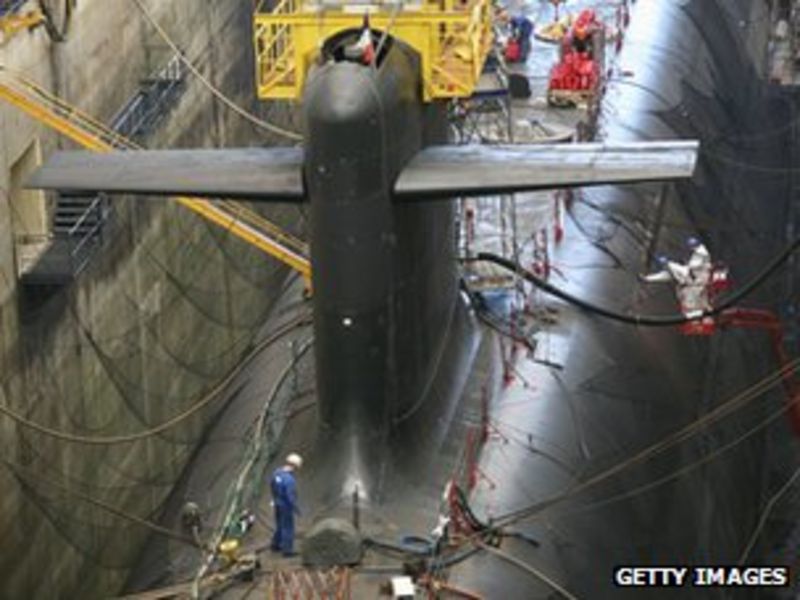France's Nuclear Deterrent: A Shared European Approach?

Table of Contents
The Current State of France's Nuclear Deterrent
France's independent nuclear deterrent is based on a doctrine of dissuasion, aiming to deter aggression against its territory and interests. This strategy rests on the principle of minimum deterrence, maintaining a credible threat of retaliation sufficient to discourage any potential attacker.
France's Strategic Doctrine
France's nuclear forces are structured to ensure survivability and responsiveness. Key components include:
- Submarine-launched ballistic missiles (SLBMs): The cornerstone of France's deterrent, these missiles offer a highly survivable second-strike capability. The Triomphant-class submarines are equipped with the M51 SLBM, capable of carrying multiple warheads.
- Air-launched cruise missiles (ALCMs): These provide a complementary, flexible deterrent option, deployed from Rafale fighter jets.
- Strategic nuclear forces command and control systems: Robust and secure systems ensure the reliable command and control of France's nuclear arsenal.
Ongoing modernization efforts include the development of the next-generation M51.2 SLBM, enhancing the range, accuracy, and penetration capabilities of France's sea-based deterrent.
Costs and Maintaining the Arsenal
Maintaining a credible nuclear arsenal is exceptionally expensive. France's annual expenditure on its nuclear forces is substantial, estimated to be in the billions of euros. This cost breakdown includes:
- Research and development: Continuous investment in new technologies and weapon systems is crucial for maintaining a cutting-edge deterrent.
- Maintenance and upgrades: The complex and sensitive nature of nuclear weapons necessitates rigorous maintenance and periodic upgrades.
- Personnel: Highly trained personnel are required for the operation, maintenance, and command and control of the nuclear arsenal.
Compared to other European defense budgets, the percentage allocated to nuclear weapons is significantly high, sparking debate about resource allocation and potential cost savings through collaboration.
Arguments for a Shared European Approach
A shared European approach to nuclear deterrence offers several potential advantages:
Burden Sharing and Cost Efficiency
Pooling resources among European nations could significantly reduce the individual financial burden of maintaining nuclear capabilities. Potential cost savings could be achieved through:
- Joint procurement of weapons systems: Shared purchasing power could lead to substantial discounts and economies of scale.
- Collaborative research and development: Joint efforts could reduce duplication and accelerate technological advancements.
- Consolidation of infrastructure: Sharing facilities and expertise could significantly cut operational costs.
Enhanced Deterrence
A unified European nuclear deterrent could potentially be more effective than several smaller, individual arsenals. This is because:
- Increased credibility of deterrence: A larger, combined arsenal would represent a more significant threat to potential aggressors.
- Reduced risk of proliferation: A unified approach could streamline safeguards and reduce the risk of nuclear materials falling into the wrong hands.
Strengthened European Strategic Autonomy
A shared nuclear deterrent could contribute to a more independent European security policy by:
- Reduced reliance on external powers: Europe would be less dependent on the United States or other external actors for its security.
- Greater control over defense policy: European nations would have more autonomy in shaping their security strategies.
Challenges and Obstacles to a Shared Approach
Despite the potential benefits, significant challenges hinder the development of a shared European nuclear deterrent:
National Sovereignty Concerns
Many European nations are reluctant to cede control over their defense and security policies, particularly concerning nuclear weapons. This reluctance stems from:
- Political sensitivities: Nuclear weapons are highly sensitive political issues, and any shared control would necessitate complex political negotiations.
- Concerns over national identity: Some nations may view a shared nuclear deterrent as a threat to their national identity and sovereignty.
Differing Strategic Goals and Priorities
European nations have varied security concerns and perspectives, making a unified approach difficult. These differences include:
- Different threat perceptions: Nations may prioritize different threats, making it difficult to agree on a common defense strategy.
- Varying levels of commitment to nuclear weapons: Some nations may be less willing to embrace nuclear weapons than others.
Technical and Logistical Challenges
Integrating different nuclear weapon systems and technologies would be a complex undertaking, presenting numerous challenges, including:
- Compatibility issues: Different weapon systems may not be easily integrated.
- Challenges of shared command and control: Establishing a unified command structure for a shared nuclear arsenal would be difficult.
- Security concerns: Ensuring the security of a shared arsenal would require robust safeguards and protocols.
Conclusion
The prospect of a shared European approach to nuclear deterrence offers potential benefits in terms of cost efficiency, enhanced deterrence, and strengthened European strategic autonomy. However, significant challenges remain, including national sovereignty concerns, differing strategic goals, and technical complexities. While a fully integrated European nuclear force might be a distant prospect, a continued conversation on the future of France's nuclear deterrent and potential for greater European cooperation on nuclear security issues is critical. Further research and open dialogue are needed to explore pragmatic solutions for managing the costs of maintaining nuclear arsenals and strengthening European strategic autonomy. The future of France's nuclear deterrent and its potential integration into a broader European framework requires careful consideration and a commitment to fostering open collaboration.

Featured Posts
-
 Los Angeles Wildfires The Growing Market For Disaster Related Gambling
May 10, 2025
Los Angeles Wildfires The Growing Market For Disaster Related Gambling
May 10, 2025 -
 Examining The Life And Untimely Demise Of A Pioneer Americas First Nonbinary Individual
May 10, 2025
Examining The Life And Untimely Demise Of A Pioneer Americas First Nonbinary Individual
May 10, 2025 -
 Market Movers Sensex Nifty Jump Adani Ports Up Eternal Down
May 10, 2025
Market Movers Sensex Nifty Jump Adani Ports Up Eternal Down
May 10, 2025 -
 Record Breaking Fentanyl Seizure Bondi Makes Major Drug Bust
May 10, 2025
Record Breaking Fentanyl Seizure Bondi Makes Major Drug Bust
May 10, 2025 -
 Oilers Upset Golden Knights 3 2 But Vegas Still Makes Playoffs
May 10, 2025
Oilers Upset Golden Knights 3 2 But Vegas Still Makes Playoffs
May 10, 2025
